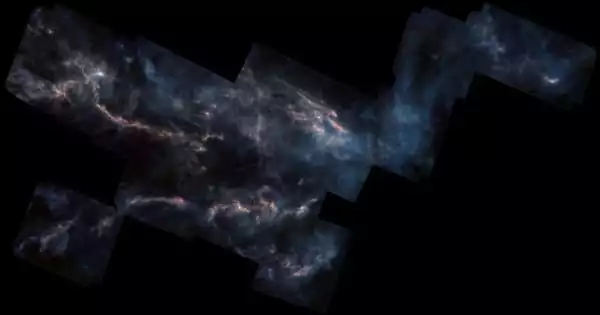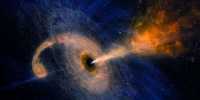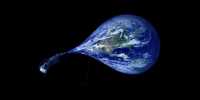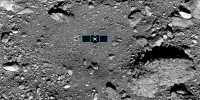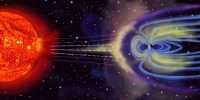An international team of scientists, including researchers from the University of Hawai’i (UH) and Japan’s National Institutes of Natural Sciences Astrobiology Center, has discovered one of the youngest planets ever discovered around a distant infant star.
An international team of scientists led by the University of Hawaii at Manoa faculty, students, and alumni discovered one of the youngest planets ever discovered around a distant infant star. This new planet joins a small group of objects that have advanced our understanding of how planets form and change over time. Observing light from this planet could help scientists figure out its composition, as well as where and how it formed in a long-gone disk of gas and dust orbiting its host star.
According to scientists, the planet and its star formed several million years ago. It is several times the size of Jupiter in terms of mass. It is so young that the energy released during its formation is still heating it up.
The planet and its star formed several million years ago. By analyzing the light from this planet, we can learn about its composition and, possibly, where and how it formed in a long-vanished disk of gas and dust around its host star.
Teruyuki Hirano
Thousands of planets have been discovered around other stars, but this one stands out because it is newly formed and can be observed directly. The planet, known as 2M0437b, joins a small group of objects that are advancing our understanding of how planets form and change over time, shedding new light on the Solar System and Earth’s origins. The detailed study was recently published in the Royal Astronomical Society’s Monthly Notices.
Teruyuki Hirano, a visiting researcher at the University of Hawaii Institute for Astronomy (IfA), discovered this infant planet in 2018 using the Subaru Telescope on Maunakea. It has been carefully studied for several years using other telescopes on Mauna Kea.
“This fortuitous discovery adds to an elite list of planets that we can directly observe with our telescopes,” said lead author Eric Gaidos, a professor in the Department of Earth Sciences at the University of Hawaii at Manoa. “By analyzing the light from this planet, we can learn about its composition and, possibly, where and how it formed in a long-vanished disk of gas and dust around its host star.”
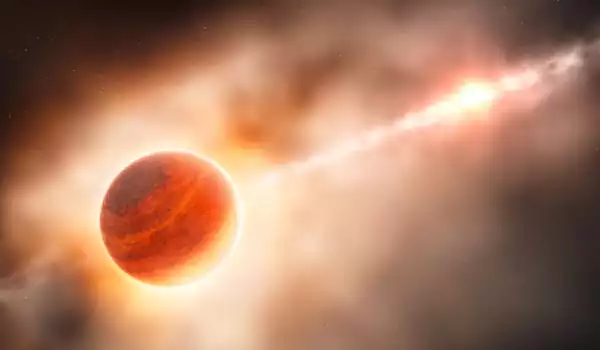
The planet is thought to be a few times more massive than Jupiter, and it formed with its star several million years ago, around the time the main Hawaiian Islands first emerged above the ocean. The planet is so young that the energy released during its formation has kept it hot, with temperatures comparable to lava erupting from Kilauea Volcano.
Key Maunakea telescopes
Teruyuki Hirano, a visiting researcher at the University of Hawaii Institute for Astronomy (IfA), discovered 2M0437b with the Subaru Telescope on Maunakea in 2018. It has been carefully studied for several years using other telescopes on the mauna.
Gaidos and his colleagues used Maunakea’s Keck Observatory to track the host star’s position as it moved across the sky, confirming that planet 2M0437b was, in fact, a companion to the star and not a more distant object. Because the star moves slowly across the sky, the observations took three years.
The planet and its parent star are located in the Taurus Cloud, a stellar “nursery.” 2M0437b has a much wider orbit than the planets in our Solar System, with a current separation of about 100 times the Earth-Sun distance, making it easier to observe. To compensate for the image distortion caused by the Earth’s atmosphere, sophisticated “adaptive” optics are still required.
“To make this discovery, two of the world’s largest telescopes, adaptive optics technology, and Maunakea’s clear skies were all required,” said co-author Michael Liu, an astronomer at IfA. “We are all looking forward to more such discoveries, as well as more detailed studies of such planets using future technologies and telescopes.”
Future research potential
More in-depth research on the newly discovered planet may not be far away. “Observations using space telescopes like NASA’s Hubble Space Telescope and the soon-to-be-launched James Webb Space Telescope could identify gases in its atmosphere and reveal whether the planet has a moon-forming disk,” Gaidos added.
The star 2M0437b orbits is too faint to see with the naked eye, but the young planet and other infant stars in the Taurus Cloud are almost directly overhead in the pre-dawn hours from Hawaii, north of the bright star Hokuula (Aldeberan) and east of the Makalii (Pleiades) star cluster.
